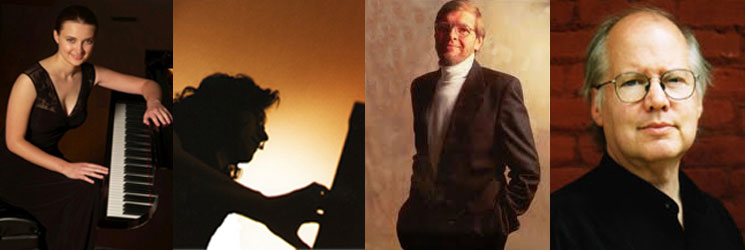
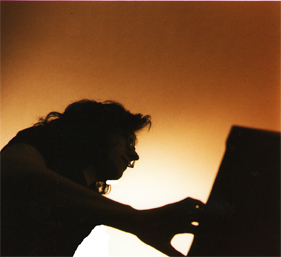
Variations on the Orange Cycle
for solo piano (1995)
Program Notes
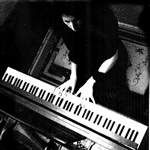
Variations on the Orange Cycle is included in Chamber Music America Magazine’s CENTURY LIST (April 99), compiled by Frank Oteri, along with works of similar length by Steve Reich, John Adams, Alvin Singleton and Leo Ornstein.
Variations on the Orange Cycle is about the experience of time. It translates brain activity into music in real time, music inherent to the unfolding of time, mirroring a conscious experience of space-time. The starting point is the 24 hour cycle (the rotation of the earth) with its succession of phases of activity, leisure, transport, rest. The succession of days, both similar and different, is comparable to variations on a theme. In the Orange Cycle, the traditional parameters of theme and variations are altered. The theme and variation are in a subjective to objective partnership. The four variations or phases refer to subjective modes of experience that occur at any point.
The theme - objective - exists not as a melody but as unchangeable fact, a reality to be accepted just as the rotation of the earth. It is the most basic musical utterance, a fundamental tone.
In terms of melodic development, the Variations are an example of what I call UMI (Universal Mode Improvisation). The four phases are different treatments of the G fundamental: modal (phases 1 and 4), chromatic (phase 2) and polytonal (phase 3). In the chromatic mode, dynamic textures are superimposed to the fundamental in a bitonal framework. The polytonal mode explodes the textures into free form while holding the fundamental. This piece was composed in 1991 in New York, subsequently recorded in one take at Cedar Sound and later revised in 1995 to prepare for the New York premiere at Merkin Hall by pianist Lois Svard.
In order
to score the piece, I recorded my improvisation on computer via midi for
automatic transcription. The advantage of this method is to retain the
freshness and spontaneity of the original impulse. Because of the polyrhythmic
combinations and the fast tempo of the input (there was no way I could
play the piece slowly without changing its feel), the first draft was
incredibly complicated and I had to experiment with various computer editing
techniques to bring the score to a point of readability without straying
too far from not only the transcription but also the ideas in the original
composition. Through this process, I resolved the problems inherent to
notated improvisation, which can be inadequate - the piece is not a mere
transcription, it is a reflected combination of transcribed improvisation
and intentional notation."
Elodie
Lauten 1997
Other
piano music projects include:
Piano Works,
1983 - piano, sequencer, sound loops
Concerto
for Piano and Orchestral Memory, 1984 (piano, sequencer, sound loops,
violin, viola, cello, trombone, with Arhur Russell and Peter Zummo)
Blue Rhythms,
1988 - piano, electornic keyboards, fiddle,electric guitar
Tango, 1985
- release on Tellus #16
Sonate Modale,
1985 (solo piano)
Sonate Ordinaire,
1986
The Mystery
of the Elements, 2002 (piano and electronics)
Crossroads
(Variations in search of a theme), 2004 (solo piano)
Ghost of
JC, 2006 (solo piano)
WeatherMuzik,
2006 (piano and electronics)
Copyright Elodie Lauten 2007
Unseen Worlds 2CD Release, 2010
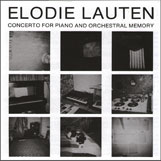
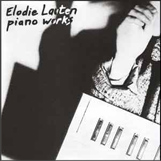
Unseen Worlds currently releases via Allegro Classical, Nail, and Forced Exposure the 2CD set Elodie Lauten "Piano Works Revisited." The set compiles out-of-print favorites "Piano Works" and "Concerto for Piano and Orchestral Memory", her "Variations on the Orange Cycle" (included in Chamber Music America's Century List), and other previously unreleased music. Nearly all of the music has never been previously available on CD, and all is newly re-mastered for digital presentation. WNYC's John Schaefer contributes liner notes to this edition. The selections from "Concerto for Piano and Orchestral Memory" feature Downtown contemporaries Arthur Russell and Peter Zummo. For more information visit: Unseen Worlds / unseenworlds.net
"a vivid, lively form of minimal music...Excellent find, this small treasure." Vital Weekly
4Tay reissues remastered Piano Soundtracks
(Albany Distribution)
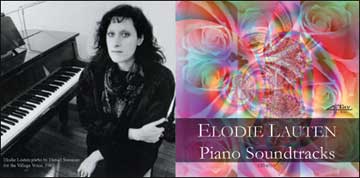
This solo piano CD contains the only recording of Sonate Ordinaire,
a live performance of New Sounds at Merkin Concert Hall. from the WNYC archive. Also contains the earliest recording of Variations on the Orange Cycle, performed by the composer, and an unpublished piano
piece composer in Paris in 2004.
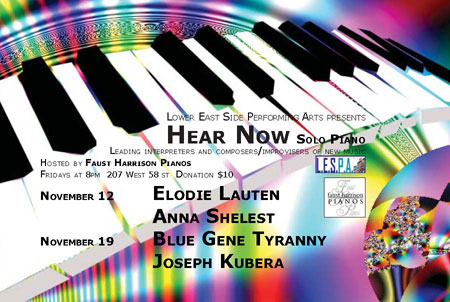
In 2010 Lauten curated the Hear Now piano music series
at Faust Harrison Pianos featuring (left to right) Anna Shelest, Elodie Lauten, Joseph Kubera, Blue Gene Tyranny
